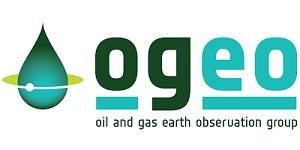On Friday, 14th September, Grit, Charlotte and myself went along to the Oil and Gas Earth Observation workshop, held at Woodside’s building in Perth. We helped a little, with me chairing a session and Gaia Resources providing some environmentally friendly conference bags, too. Although I was a little jetlagged, it was a really interesting day, with some really interesting updates for those of us that work in the remote sensing/earth observation area.
The most interesting update came early, with the presentation about the Global Monitoring for Environment and Security project. Grit has been keeping her eye on this one for some time, but it was news to a lot of the audience. You can find out more at http://www.gmes.info/, but the short of is that the program will send up five new satellites (known as the Sentinels), and all of the data will be freely available and open to all to use. This was touted as a game-changer for the earth observation industry. Have a look at the launch video here:
Let me reiterate these five new satellites will produce open, freely available data. The first launch is scheduled for 2013, so start buying up hard drives now for all this free data you’ll be getting.
At the end of the day was another game changer; and something that I am personally quite interested in, the use of Unmanned Aerial Vehicles (UAVs, or drones) in remote sensing. We’ve previously looked at drones for field work, but the Civil Aviation Safety Authority requirements (which a lot of organisations currently ignore) meant we shelved that program until we get the accreditation we need to move this forward. The guys who presented here showed just how much effort is required to get this accreditation, and showed some of the great results they can get from the systems in place. So this really got me thinking about it again, and I think you’ll see some more from us in this (very low orbit) space in the future.
The interesting thing about the OGEO presentations were the quality of the work being done in this area, both in Europe and back here in Australia. There were some great presentations about doing things like using WorldView 2 imagery to undertake a wide range of different tasks (from bathymetric mapping to algae detection), using Synthetic Aperture Radar (SAR) to measure storm strengths, and even how hard it is to run a receiving station in Svalbard, where employees commute via dogsled and carry a rifle to ward off polar bears.
I asked Charlotte and Grit to give me some highlights from the conference from their view as well, and they agreed that the presentations on the UAVs and the Sentinel program were two of the main highlights. Some of the other areas included:
- The OGEO portal (more on that in a second),
- The presentations on the WorldView 2 satellite imagery uses in a couple of areas – Leah Glass from GeoImage gave a great talk about environmental change detection using time series imagery,
- The work being done on SAR data; being able to forecast and hindcast ocean currents, and its application in the area of ocean modelling in general,
- Again, the presentations on Svalbard from Paul Whitaker; which as well as indicating the dangers of an arctic commute also talked about timeliness of getting imagery out there into the public domain in an era of heightened scrutiny on environmental performance.
Now, about the OGEO portal – another announcement at the event was that OGEO has opened their new web portal at http://www.ogeo-portal.eu/, where they hope to start sharing information about detection methods, build networks of people and to start collaborating. It’s a great step forward and if you are at all interested in remote sensing – for oil and gas or other industries – I’d encourage you to sign up to the portal.
For all three of us, OGEO was a great opportunity – that is very rarely presented here in Perth – to hear from overseas people and local people, and to network and to discuss how to collaborate in what was quite an open, friendly environment. It was definitely worth us going, and I hope one day we get an opportunity to go to another one.
For more information on the event, feel free to drop me an email, send me a tweet, or connect to me on LinkedIn.
Piers
Late Edit: Peter Hausknecht, the Chairman of OGEO, asked me to indicate that the OGEO presentations will be available here in a few weeks time. Other material on previous workshops can be found here (2011) and here (2010).


Comments are closed.